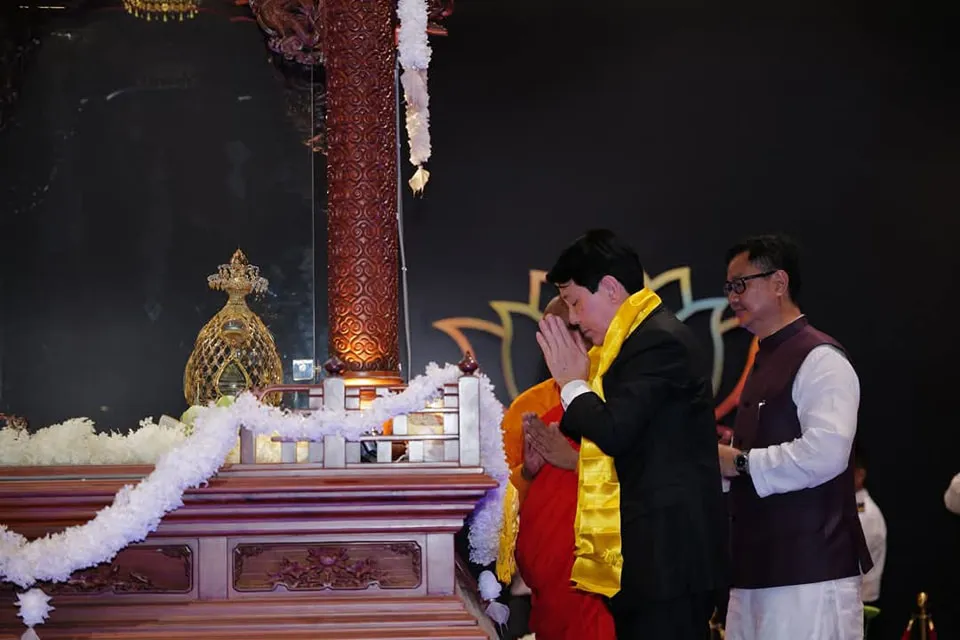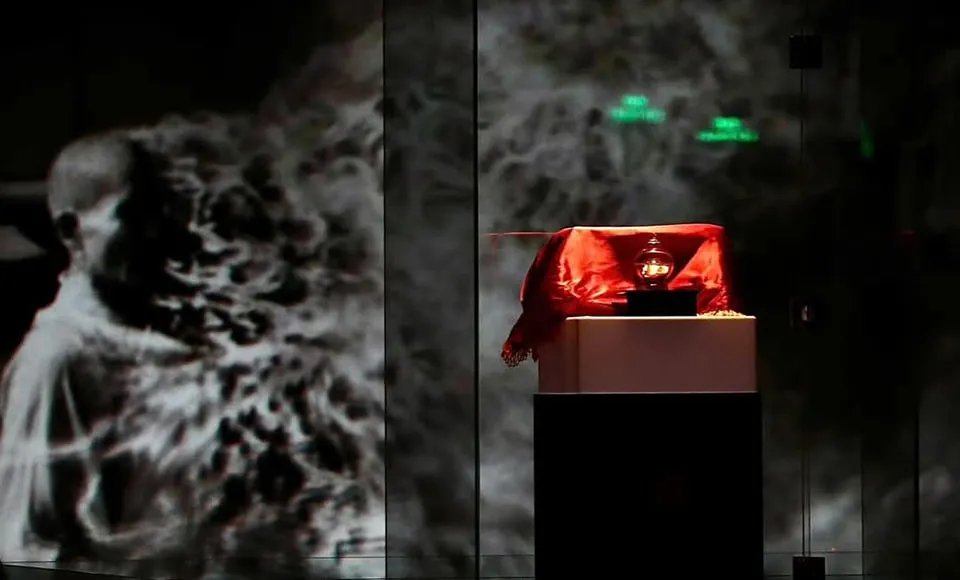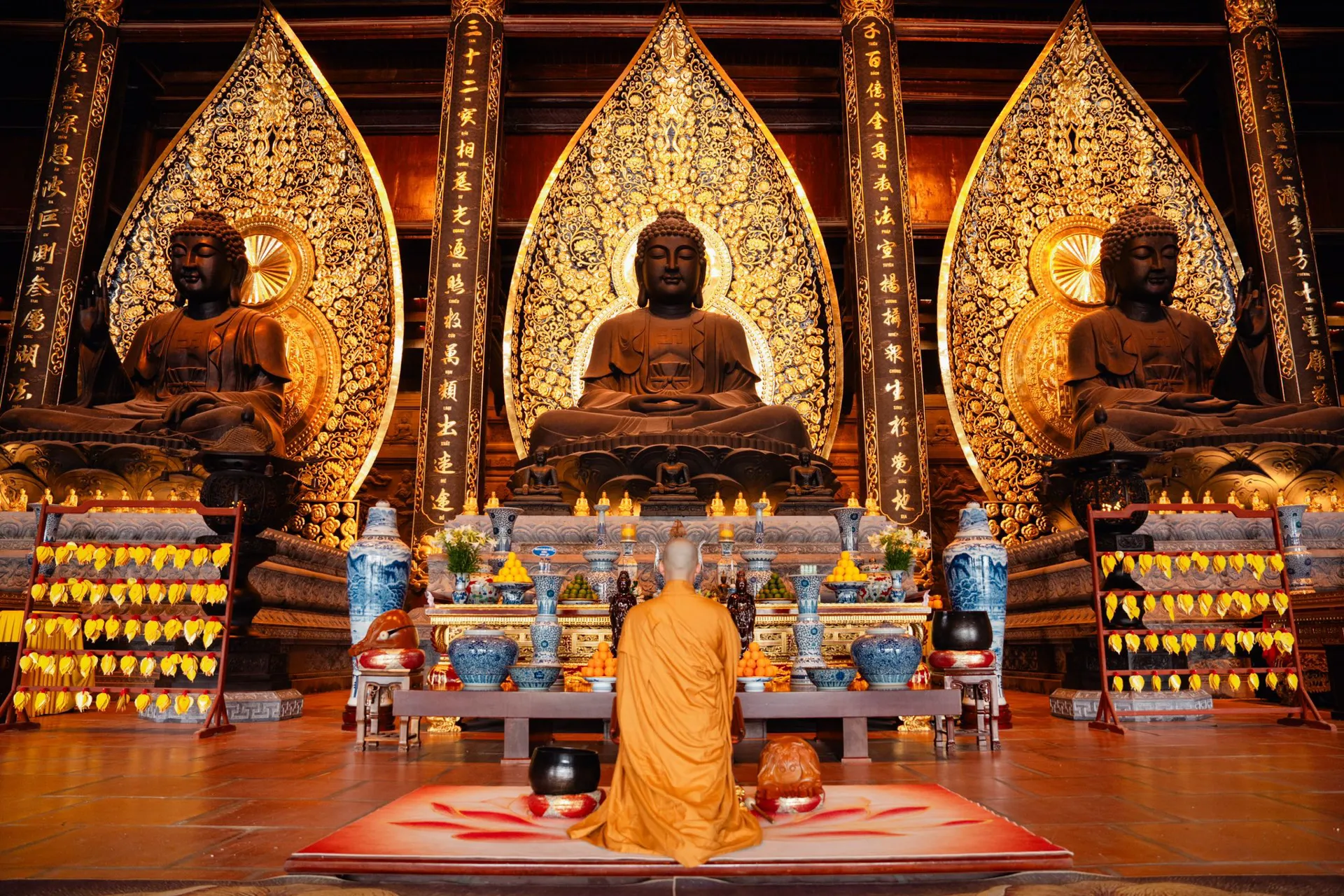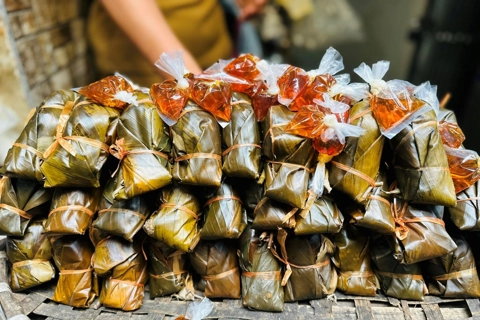Vesak’s tourism journeys to honor buddhist heritage and Vietnam’s national unity
A pilgrimage to Vietnamese Buddhist centers contributes to the education of domestic and foreign Buddhists on the “good life, good religion” lifestyle.
THE HANOI TIMES — Vietnamese tour operators have launched special spiritual offers in celebration of the United Nations Day of Vesak 2025 taking place from May 6 to 8 in Ho Chi Minh City.

President Luong Cuong leads a religious ceremony honoring Buddha Sakyamuni's relics at Thanh Tam Pagoda in Ho Chi Minh City. Photo: Vesak 2025 Organizer
Specifically, visitors can choose from a series of spiritual tours, such as visiting the Vietnam Buddhist Academy in Ho Chi Minh City from May 6-8, making a pilgrimage to the Quan Su Pagoda from May 9-14, considered the nerve center of Buddhism in Hanoi, and visiting the Tam Chuc Pagoda in Ha Nam Province on May 15-21.
According to the organizers, the Vesak 2025 tour aims to spread the spirit of Buddhism treasuring mutual love, kindness, and national solidarity. Through various services, tour operators hope to promote Vietnam's destination, image, and people on the international spiritual tourism map.

The opening ceremony of Vesak 2025 takes place on May 6 at the Vietnam Buddhist Academy in Ho Chi Minh City.
By joining the Vesak 2025 spiritual tour series, visitors will have the opportunity to worship Buddha’s relics - the national treasure of India first brought to Vietnam - and learn about sacred Buddhist relics. They will also have the chance to balance their inner selves and spread love within the community.
Spiritual experiences include a 500-square-meter flag-raising ceremony, a candlelight vigil for peace, a flower lantern festival for peace and national prosperity with 2,000 participants, an exhibition of ancient books, and a display of 87 Vietnamese Buddhist national treasures.

The heart relic of Bodhisattva Thich Quang Duc, a symbol of self-sacrifice and spiritual devotion, are on display for public veneration in Ho Chi Minh City until May 10.
The Buddha’s sarira, brought from India, is displayed at the Vietnam Buddhist Academy in Binh Chanh District, Ho Chi Minh City, as part of the ceremony. In addition, the heart relic of Bodhisattva Thich Quang Duc will be available for people to worship at the Vietnam Quoc Tu, also known as the Vietnam National Temple, located at 244 Ba Thang Hai Street in District 10, Ho Chi Minh City, from May 6 to 10. This is the first time in 34 years that the treasure has been taken out of storage at the State Bank of Vietnam for public worship.
Quan Su Pagoda, the headquarters of the Vietnam Buddhist Sangha, is located on Quan Su Street in downtown Hanoi. Built in the 15th century, the pagoda has long been a popular destination for locals and tourists, especially on the first and full-moon days of each lunar month. During Tet and on the seventh full moon of the year, the pagoda welcomes large numbers of Buddhist followers who come to offer incense, fresh fruit, flowers, and prayers for health and peace.

Tam Chuc Pagoda in Ha Nam Province, Vietnam. Photo courtesy of the pagoda.
Tam Chuc Pagoda, in the northern province of Ha Nam, is renowned as one of the largest in the world. The complex, inaugurated in 2019, was built on the site of an ancient pagoda dating back over 1,000 years to the Dinh Dynasty. Though parts of the new complex are still under construction, it adheres to traditional Vietnamese Buddhist architecture. Notable structures include the Tam Quan Gate, the Hall of Avalokiteshvara (Dien Quan Am), the Three-Times Buddha Hall (Dien Tam The), the Dharma Hall (Dien Phap Chu), and the Jade Pagoda (Chua Ngoc). Each building houses monumental, exquisitely crafted Buddha statues. Set against a backdrop of serene lakes and limestone mountains, Tam Chuc is a majestic pilgrimage site and a center for the preservation and global promotion of Buddhist culture.











